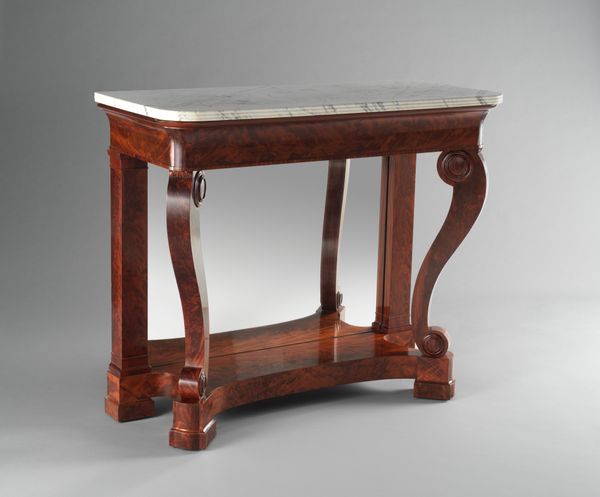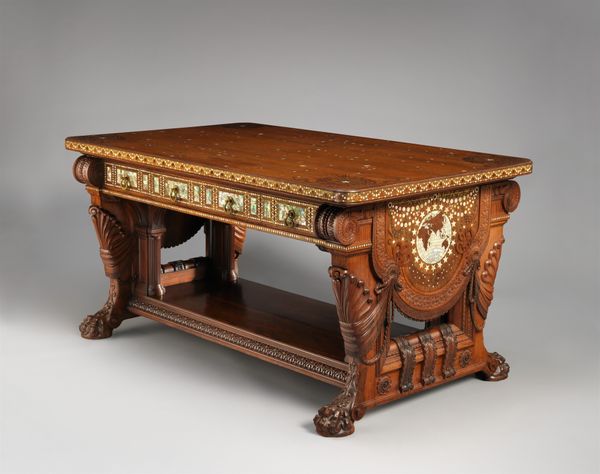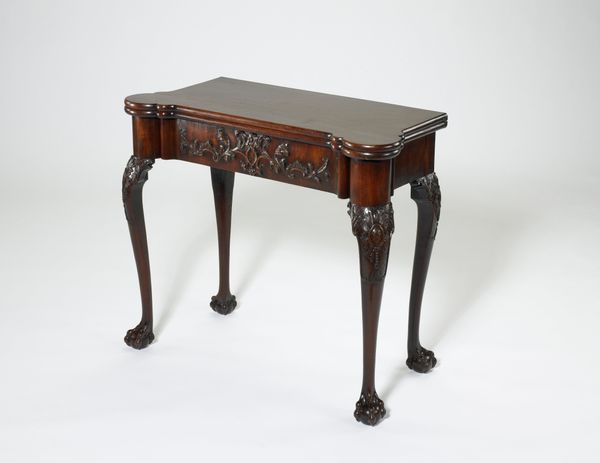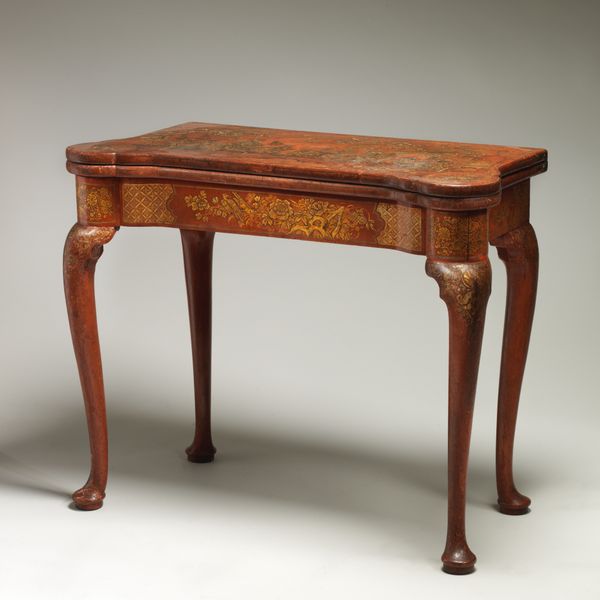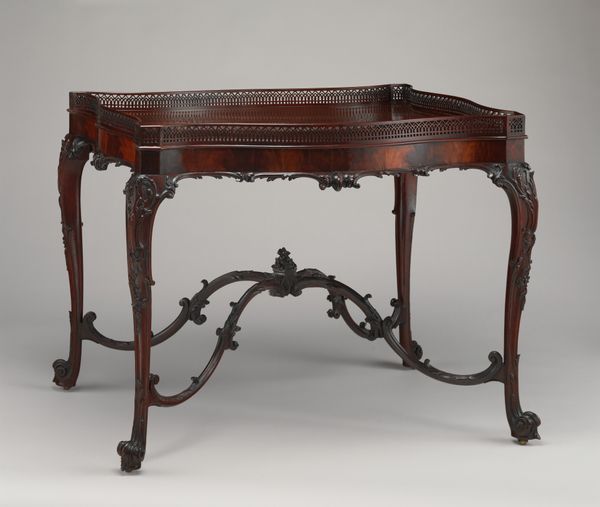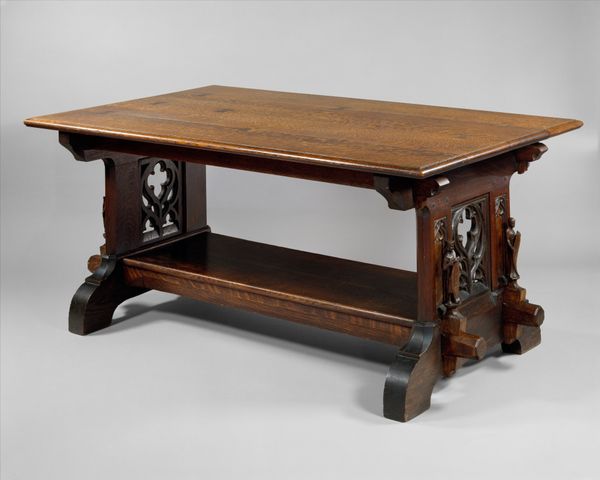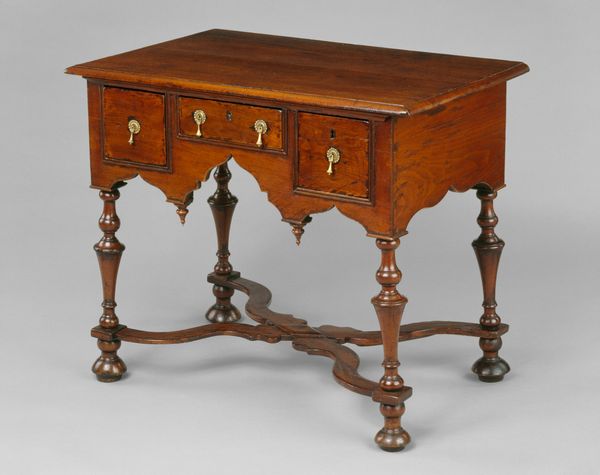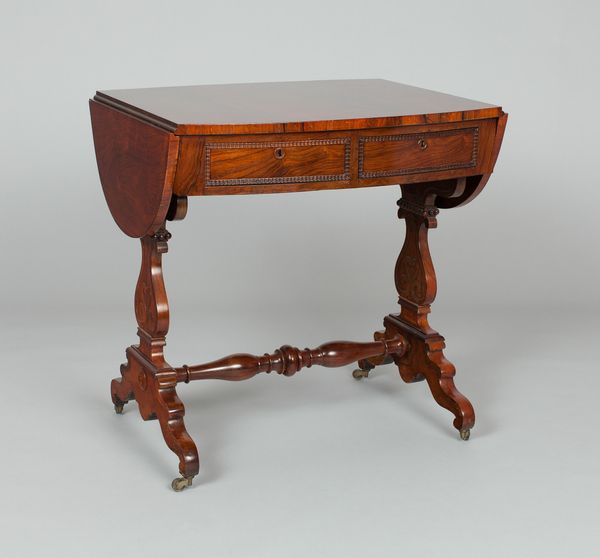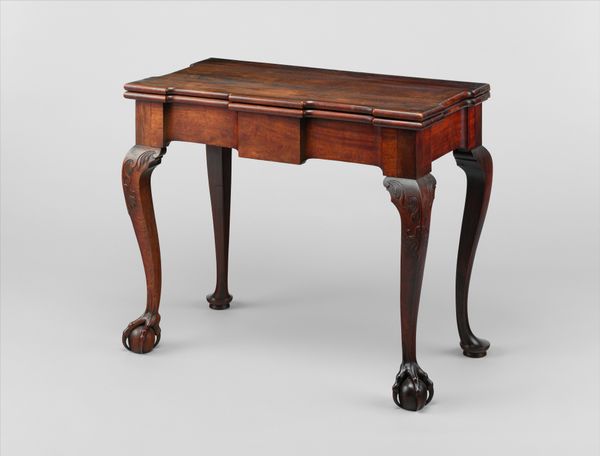
carving, sculpture, wood, marble
#
neoclacissism
#
carving
#
sculpture
#
furniture
#
geometric
#
sculpture
#
ceramic
#
wood
#
decorative-art
#
marble
Dimensions: 37 x 43 x 20 1/8 in. (94 x 109.2 x 51.1 cm)
Copyright: Public Domain
This pier table was crafted in the 1830s by Joseph Meeks & Sons, offering a glimpse into the opulent material culture of the American South. The classical revival style, rich rosewood veneer, and marble top speak to a desire for refined elegance. But let's consider the social context. Such luxury was built upon the exploitation of enslaved labor. The cotton economy, fueled by enslaved people, provided the wealth that allowed families to purchase such status symbols. This table, therefore, stands as a silent witness to the inequalities inherent in the antebellum South. The labor of unnamed, unacknowledged individuals is invisibly present in the table's very form. It is a reminder that beauty and privilege can often mask histories of oppression. Reflecting on this piece, we must ask ourselves: what does it mean to inherit and display objects tied to painful histories? How can we acknowledge the complexities and contradictions embedded within them?
Comments
No comments
Be the first to comment and join the conversation on the ultimate creative platform.
